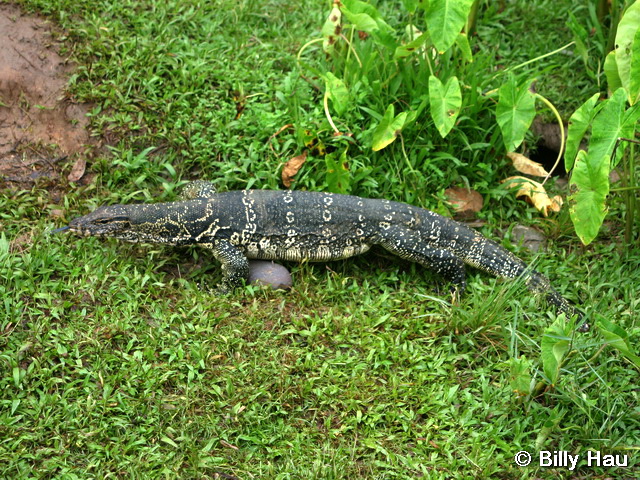Varanus salvator (Laurenti, 1768)
Common Water Monitor 巨蜥
Suborder
Lacertilia 蜥蜴亞目
Bands prominent in the young, but faded in old adults.
Head large, rather flattened and elongate. Neck also elongate. Tongue long and forked.
Large, curved claws on all digits. Tail of juveniles with distinct yellow-black bands which fade in adults.
Tail long, muscular, laterally compressed; about half the total body length. Scales bead-like.
Lives mostly in low country, but almost nothing is known of the habits of native specimens.
In Southeast Asia frequents the environs of rivers and lagoons: hence the name 'Water Monitor'.
Hisses loudly when annoyed, flickering its tongue and opening its mouth wide in threatening fashion.
When cornered, lashes its tail sideways in self-defense against the intruder. This behaviour could be a way to stun large prey.
Is an excellent climber, relying on its hook-like claws for support.
Occasionally raids farms, kills and eats chickens and other small livestock. Will eat carrion.
Also reported from various localities in the 80s and 90s, but the specimens were most likely escapes or released animals.
A very rare species locally; may be extinct in Hong Kong as optimal wetland habitats for this species have been destroyed.
The Mai Po marshes, the best remaining area, have not yielded reports of this lizard for many years.
Occurs in southern China, and from Sri Lanka eastward through Southeast Asia to Indonesia.
China Redlist: Critically Endangered / Extinct in the Wild
